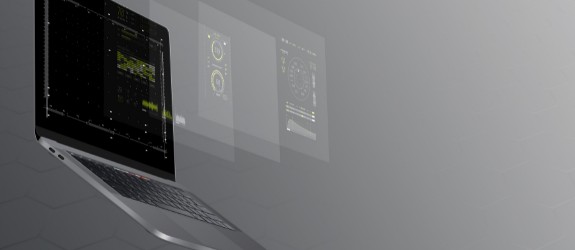Laravel API: how to program interfaces
Laravel is a popular framework for developing PHP-based web applications. It provides support for common development tasks such as routing and session management while providing an integrated toolset for easy creation of RESTful APIs.
Laravel’s interface system provides a way to abstract the implementation of classes so you can focus on what they do, not how they are implemented. In this blog post, we will discuss how interfaces work in Laravel and give some examples of how to use them in your projects!
What is meant by interfaces?
An interface is the medium that allows you to interact with something. For example, if you want to play a video game, your controller or keyboard serves as the interface for interacting with the game. You press buttons on the controller to move and defeat enemies.
Your computer mouse is also a kind of interface – you can use it to navigate through websites by clicking on various links. So what are interfaces? They are simply tools for communication between two things!
What are interfaces in programming?
Interfaces are an important part of programming, but many people don’t know what they are.
An interface is a set of rules for how code should behave. It is something like the Constitution of the United States: it contains guidelines for how something should work and what can be done with it.
There are two types of interfaces: abstract and concrete. An abstract interface defines only the rules, without implementation details, while a concrete interface contains both the rules and specific implementations to comply with those rules.
What is understood by API?
It stands for application programming interface. This is a set of tools that will let you create an application or website without having to deal with the technical details.
APIs are great because they allow developers to focus on their part of the project and not waste time trying to figure out how things work under the hood.
Why are APIs useful?
They are the backbone of any good software company. They allow developers to interact with your product or service and create new products using it as a foundation. Here are 11 reasons why they are so useful for businesses:
The first reason is that they provide your users with the data they need. This means you can build an application without having to store and maintain large amounts of data yourself, saving time and money!
The second reason why they are useful is that they save time – not only for employees, but also for customers. With a well-designed API, customers can access all the information they need without having to fill out time-consuming forms.
The third reason why they are useful is that they allow your business to easily integrate with other services or applications, which helps you create a more robust and flexible application for your users.
The fourth reason for the usefulness of them is that they can be easily updated. You don’t need to constantly update the application for every change, as it uses a single API that you only need to monitor and maintain.
The fifth reason is that they give your users more control over their data. Users who manage sensitive data in an application often want complete control over where that information goes – APIs give them that control.
The sixth reason is that they are scalable and flexible, which means you can quickly add features to your application without worrying about the overall impact on performance. This also allows for easier future updates!
The seventh useful property of an API is its ability to integrate with existing applications. Since an API is generally one used as an entry point for an application, it is easier to integrate it with other services or applications you already have.
The eighth reason why they are useful is that they allow your business clients and users to access them anytime and from anywhere. They are easy to use on mobile devices as they only require a web browser – no apps are needed!
The ninth reason they are useful is that they make your application more secure, meaning you can be confident that your users’ data is safe.
Finally, the tenth reason they are useful for companies like yours is that they allow them to scale their product and services as needed. If demand ever increases or decreases, your application can easily adapt to it.
And the last reason they are useful is that they make applications more reliable! Since you’re not storing or maintaining the data yourself, there are fewer errors in your product – which makes both employees and users happy!
How can interfaces be programmed?
Programming interfaces can be a daunting task. The design of an interface consists of three main parts: Planning, Design and Implementation.
Planning is important because it ensures that you have a foundation to work from when designing and developing the user interface.
The design phase determines what the interface will look like and how it will work, and decides what images or graphics are needed. Implementation includes coding the necessary HTML, CSS and JavaScript code to bring your designs to life in the browser!
1. what are programming interfaces? Developers connect their products to other software via programming interfaces. They define the specifications that an application needs in order for another piece of code to work with it, and they also provide documentation on what the endpoint expects from the developer’s side in order for its processes to run correctly. If you’ve ever used a function like putenv in PHP or an API like Twitter’s, then you’ve already used a programming interface without knowing it!
2. the basics: variables and constants: When you write code, you need to know what values your program will work with. This is where variables and constants come into play: they are used as placeholders for data in order to perform various tasks with them. Variables can be changed during a script run or even between function calls, while constants remain constant throughout the program.
3. the basics: functions and classes: Functions and classes are the building blocks of programming interfaces. Both contain a series of statements that are executed in sequence, with classes usually grouping multiple functions together for ease of access. For example, the PHP function `mysql` contains lots of ready-made code to make working with databases even easier than it already is!
How to program interfaces with API?
Laravel is a good choice for building your API. It’s easy to use and well documented, so anyone can get started quickly. Whether you are a Laravel expert or a beginner.
One of the best ways to create a great interface is to use the Laravel API. Laravel is an open source PHP framework that can be used for web development and other types of programming. You can use it to create APIs that will help you program interfaces in your website!
Laravel has a built-in tool for creating application programming interfaces. Laravel provides us with the Artisan command line interface that we can use to create new API controllers. Laravel has many other features such as MVC (Model View Controller), routing, authentication, sessions and the ORM (Object Relational Mapper) Eloquent.
Interesting contributions:
Information about Restful API with Laravel
Official information from Laravel.com about interface development

Sascha Thattil ist Geschäftsführer bei YUHIRO. YUHIRO unterstützt Agenturen, IT Dienstleister und IT Abteilungen bei dem Aufbau von Webentwickler/ Laravel Entwickler Teams in Indien.


Leave a Reply